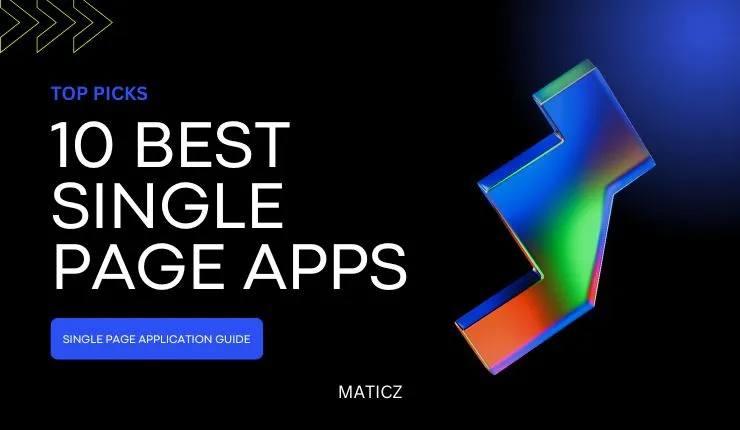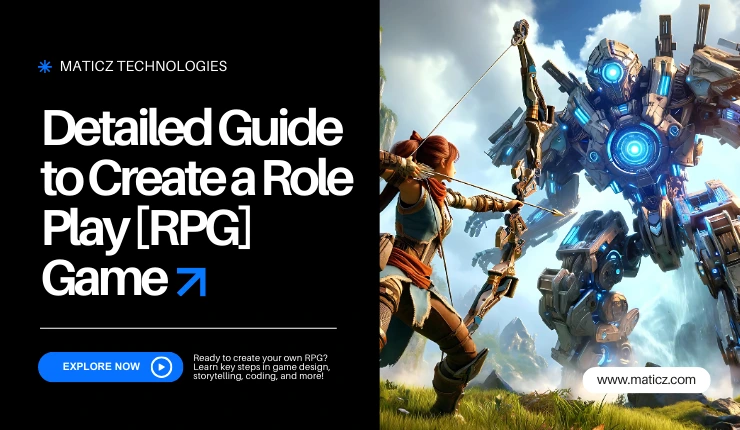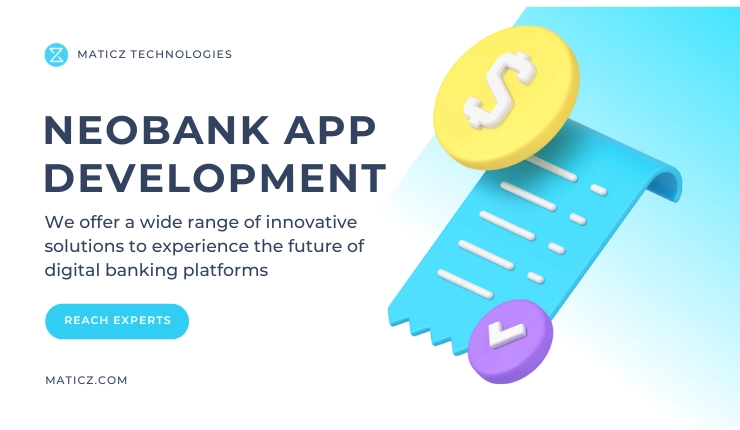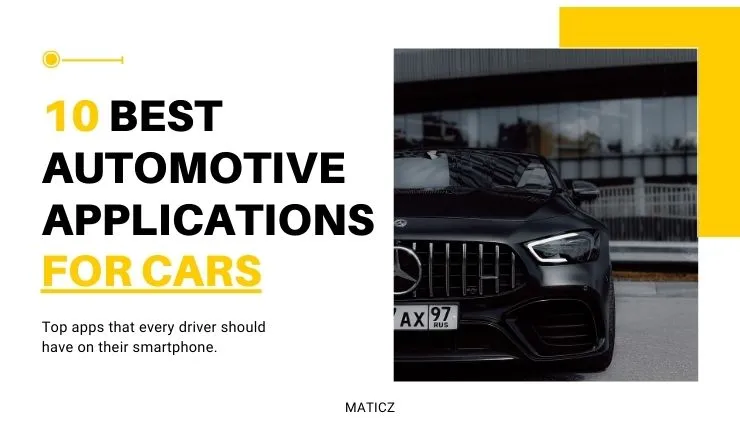Share Posts

Best Single Page Apps in 2025
80
4388
103
In today's fast-paced world, users expect web applications to be smooth, responsive, and engaging.
To offer the user the best possible web experience, enter Single-Page Applications (SPAs), a revolutionary approach to website and web application development that delivers a seamless user experience by loading a single page and dynamically updating its content.
This blog will delve into the world of SPAs, exploring their inner workings, benefits, and the frameworks that bring them to life.
By the end, you'll have a clear understanding of why SPAs are taking the web by storm and how they can potentially enhance your next project.
What is a Single Page App?
A single-page app is a web application or a website that dynamically rewrites the current page with new data without loading the entire new page. This makes the website more interactive and more user-friendly.
Single-page applications (SPAs) offer a revolutionary user experience, making websites feel more like the smooth and responsive apps you love on your phone.
Here's the magic behind SPAs. Unlike traditional websites, they load a single HTML page initially. Then, as you interact with the website (clicking buttons, searching, etc.), JavaScript in the background fetches only the necessary data from the server. This data is then used to update specific sections of the page you're already on, creating a seamless and dynamic experience.
SPA is the reason behind scrolling through endless content on Facebook or managing your inbox in Gmail all without ever leaving the initial page. This is the power of SPAs, and it's fundamentally changing how we interact with websites.
This approach offers several advantages, which we'll explore in a later section. But for now, let's dive deeper and understand the key differences between SPAs and traditional Multi-Page Applications (MPAs).
Differences Between Multi-Page Applications (MPA) and Single Page Apps (SPA)
While both MPAs and SPAs deliver web content, their underlying functionalities differ significantly. Here's a breakdown to help you understand the key distinctions.
| Functionalities and Capabilities | Single Page Apps (SPA) | Multi-Page Apps (MPA) |
| Page Loading | Loads a single HTML page initially and updates content dynamically using JavaScript in the background. This creates a faster, and more seamless experience. | Each user interaction triggers the browser to reload a completely new HTML page from the server. This can lead to a slower and more disjointed experience. |
| User Experience | Offers a smoother and more fluid user experience. Users perceive the entire interaction as happening on a single page, with content updates occurring instantly. | Transitions between pages can be clunky, with a noticeable delay as the new page loads. |
| Content Updates | Updates specific sections of the page with new data fetched in the background, without requiring a full page reload. | Requires a full page reload to update any part of the content |
| Development Complexity | Requires more development effort due to the reliance on JavaScript for dynamic content updates and user interactions. | Generally considered simpler to develop, especially for smaller, static websites. |
| SEO (Search Engine Optimization) | Since most content resides within a single initial page, SEO optimization can be more challenging. | Each page has its URL and content, potentially making it easier for search engines to index and rank individual pages. |
| Performance | SPA loads faster than MPA because it doesn't need to reload the new page for each action. | Comparatively slower than the SPA because every time MPA needs to reload every HTML, CSS, and JavaScript of the new pages. |
| Security | SPAs will be more difficult to secure from attacks because all the logins are executed only in the browser. | MPA executes the application login from the server so MPA can mitigate the security risk. Which makes it more secure than SPAs. |
| Application Size | SPA has a comparatively smaller application size because it does not need to include all the static content in the initial download. | MPA has a larger application size because it needs to include all the static content for each page in the initial download. |
Now you will get a clear picture of how single-page applications differ from multi-page applications. Now let's take a look at the popular single-page applications that you will use frequently.
Top 10 Single Page Apps
These are all the lists of companies and products that are most popular and successful based on single-page applications.
Netflix
Netflix stands as a prime example of a single-page application (SPA) executed with technical finesse. Let's delve into the potential technical underpinnings that power its seamless user experience:
Frontend Framework: React.js is a popular choice for SPAs due to its component-based architecture and virtual DOM, making it a strong contender for Netflix's front end.
Data Fetching: Netflix utilizes a combination of techniques to fetch data from its servers. REST APIs are a common choice for SPAs, allowing the front end (React) to request specific data (movie details, recommendations) from the backend as needed.
State Management: Managing user state (login status, watchlist, playback progress) is crucial for SPAs. Redux, a popular state management library, is a potential candidate for Netflix.
Routing: As you navigate through different sections of Netflix (browse by genre, view details of a movie), a routing library handles these transitions seamlessly. React Router is a widely used option for SPAs.
This analysis provides a glimpse into the potential technical architecture of single-page applications (SPAs) that empower the smooth and engaging user experience Netflix delivers.
Facebook, a social media giant, leverages Single Page Application (SPA) architecture to create a dynamic and engaging user experience. Here's a breakdown of the potential technical underpinnings behind its functionality:
Frontend Framework: Facebook's single-page application leverages React for its powerful component-based architecture, enabling efficient rendering of dynamic content like the news feed, chats, and updates.
Data Fetching: To retrieve data from the server, Facebook utilizes a combination of REST APIs for specific data and GraphQL APIs for complex requests involving relationships between different data entities.
Rendering: Facebook employs both client-side rendering (CSR) for faster initial load and server-side rendering (SSR) for improved SEO and user experience, especially for users with slower connections.
State Management: To manage user state (login status, friend list, chat history), Facebook utilizes libraries like Redux or MobX, ensuring a consistent user experience across the application.
Real-time Communication: Real-time updates are facilitated by WebSockets, enabling persistent two-way communication between the server and client, allowing real-time notifications without constant polling.
These are the technical architectures that Facebook used to empower a smooth social media experience.
Gmail
Gmail exemplifies the power of Single Page Applications (SPAs) in revolutionizing email management. Here's a breakdown of the core technologies potentially underpinning its seamless functionality:
Frontend Framework: Gmail leverages Google's open-source framework, Angular, for its front end. This framework facilitates efficient rendering of dynamic content updates within the interface.
Data Fetching: Data fetching relies on both RESTful APIs and client-side rendering (CSR). RESTful APIs handle core functionalities like accessing Gmail mailboxes and sending mail, while CSR ensures a smooth user experience by handling updates dynamically.
State Management: Gmail utilizes Angular's built-in state management capabilities to maintain user state and ensure consistency across the interface.
Real-time Communication: Google utilizes WebSockets, a technology enabling persistent two-way communication channels. WebSockets allow Google's servers to push updates to your browser in real time.
Offline Functionality: Gmail offers limited offline functionality by leveraging IndexedDB to store data locally on your device and synchronize it with the server once you're back online.
By implementing these core technical elements, Gmail delivers a dynamic and efficient email management experience, showcasing the power of SPAs in transforming web applications.
Google Maps
Google Maps epitomizes the effectiveness of SPAs in creating a rich and interactive map experience. Let's delve into the confirmed technical building blocks that power its functionality:
Frontend Framework: Built with Google's open-source framework, Angular, ensuring efficient rendering of dynamic map elements and user interactions. This ensures a smooth experience as you zoom, pan, search for locations and interact with various map features.
Data Fetching: Google Maps Platform APIs. Fetch map tiles, search for locations, and display points of interest. Client-side Rendering (CSR). Initial map interface sent to the browser, updates handled dynamically on the client side with JavaScript.
Vector Tiles: To ensure smooth and scalable map rendering across various devices and internet connection speeds, Google Maps utilizes vector tiles. These tiles are lightweight and composed of vector graphics, allowing for dynamic rendering.
Real-time Traffic Updates: For real-time traffic information displayed on the map, Google Maps likely utilizes Google Maps Platform's Traffic Layer API. This API provides real-time traffic data that is dynamically integrated into the map.
With the help of a single-page application, Google Maps delivers a dynamic, interactive, and user-friendly map experience.
Twitter, the platform for real-time updates and conversations, leverages SPA architecture to deliver a fast-paced and engaging user experience. Here's a breakdown,
Frontend Framework: Built with React, a framework optimized for complex and dynamic SPAs. This ensures smooth rendering of the ever-changing content as you interact with tweets, messages, and the feed.
Data Fetching: RESTful APIs. Used for core functionalities like fetching tweets, and profiles, and posting new content. Server-Sent Events (SSE). It enables real-time updates by establishing a persistent connection and allowing servers to push new data (like new tweets) to your browser instantly.
Client-side Rendering (CSR): Prioritizes speed and responsiveness by sending the initial interface to your browser and handling subsequent updates like displaying new tweets dynamically on the client side with JavaScript.
By implementing these core technical elements, Twitter, the social media giant, delivers a dynamic and fast-paced platform for staying connected and engaging in real-time conversations.
Google Drive
Google Drive, a cornerstone of cloud-based productivity, delivers a seamless and collaborative file management experience by leveraging Single page applications (SPA).
Frontend Framework: Google Drive utilizes its open-source framework, Angular, to construct the user interface. Angular's features, like dependency injection, two-way data binding, and a robust component-based architecture, enable efficient rendering.
Data Fetching and Synchronization: Google Drive relies heavily on its proprietary APIs to exchange data between your browser and Google's servers. Drive API is Core functionality like fetching file lists, retrieving file metadata, and uploading and downloading files likely utilize the well-defined Google Drive API.
Client-side rendering (CSR): Prioritizing speed and responsiveness, Google Drive employs client-side rendering. The initial HTML, CSS, and JavaScript needed to render the core drive interface is sent to your browser.
Google Drive delivers a dynamic and collaborative platform for managing your files and working together with others in real time.
GitHub
GitHub, the world's leading platform for hosting and collaborating on code, also uses Single page application (SPA) architecture to deliver a smooth and efficient user experience for developers.
Frontend Framework: GitHub employs React, a popular open-source framework well-suited for building complex and dynamic interfaces. React's component-based architecture allows for efficient rendering of code repositories.
Data Fetching with RESTful APIs: Core functionalities like fetching repository details, viewing issue lists, and managing pull requests rely on well-defined RESTful APIs provided by GitHub.
Client-side Rendering (CSR): Prioritizing speed and responsiveness, GitHub utilizes client-side rendering. The initial HTML, CSS, and JavaScript necessary to render the core GitHub interface are sent to your browser.
By implementing these core technical elements, GitHub fosters a streamlined and dynamic platform for developers to manage code, and collaborate on projects.
Airbnb
Imagine searching for unique accommodations, seamlessly filtering options, and managing bookings, all without ever leaving a single web page. This is the magic Airbnb delivers just because of its Single Page Application (SPA) architecture.
Frontend Framework: Built with React, offering a smooth user experience through efficient rendering of various elements like listings, maps, and calendars.
Data Fetching: Employs GraphQL, a query language that optimizes data retrieval by allowing the front end to request specific data in a single query, reducing network requests.
Client-side Rendering (CSR): Prioritizes speed and user-friendliness by sending the initial interface and handling subsequent updates dynamically on the client side with React.
Real-time Communication: Leverages WebSockets to enable real-time features like instant booking confirmations or managing guest messages through a two-way communication channel between browser and server.
From filtering search results based on specific criteria to updating calendar availability and managing communication with hosts, everything feels refreshingly instantaneous. This approach, built on SPAs, has redefined the online hospitality landscape, offering a user-centric and engaging way to explore and book travel accommodations.
Pinterest's visually captivating interface, where inspiration seems to flow infinitely, isn't just a result of creative content. It's powered by the strategic use of Single Page Application (SPA) architecture.
Frontend Framework: Pinterest utilizes React, a popular open-source framework adept at handling complex and dynamic user interfaces. React's component-based architecture allows for efficient rendering of ever-changing content feeds, personalized recommendations, and interactive elements like boards and pins.
Data Fetching: Uses RESTful APIs for core functionalities like fetching pins, user boards, and recommendations. These APIs efficiently retrieve specific data needed by the React frontend.
Client-side Rendering (CSR): Prioritizes speed and user engagement by sending the initial interface and handling subsequent updates dynamically on the client side with React, minimizing full-page reloads.
Image Optimization: Pinterest utilizes various image optimization techniques. This involves techniques like resizing, compression, and lazy loading to ensure fast loading times and a smooth visual experience.
Infinite Scrolling: Achieved through a combination of client-side and server-side techniques. Client-side JavaScript detects when you reach the end of content and triggers an API request for more pins, which are then integrated dynamically.
From personalized recommendations to smooth infinite scrolling, everything feels effortlessly continuous. This SPA approach lies at the heart of Pinterest's success, making it a visually stimulating platform for users to explore ideas.
Paypal
PayPal, a titan in the online payments industry, leverages single-page application (SPA) architecture to deliver a secure and efficient user experience for sending and receiving money.
Frontend Framework: PayPal utilizes React, a popular open-source framework well-suited for building complex and dynamic user interfaces. React's component-based architecture allows for efficient rendering of transaction details.
Data Fetching: Employs RESTful APIs for core functionalities like retrieving transaction history, and account balance, and initiating payments. These APIs efficiently deliver specific data (transactions, account info) to the React front.
Client-side Rendering (CSR): Prioritizes speed and responsiveness by sending the initial interface and handling dynamic updates (recent transactions, balance changes) on the client side with React, minimizing page reloads.
Security Measures: Security is paramount for online transactions. PayPal employs robust security measures, likely including data encryption, secure authentication, and fraud detection to protect user information and financial data.
Real-time Communication: Leverages WebSockets to enable real-time features like transaction notifications or two-factor authentication through a two-way communication channel between browser and server.
This exemplifies the power of single-page application SPAs in transforming the online payment landscape and creating a seamless financial management experience.
Top 10 Frameworks to Build the Single Page Application
Here are a few of the most popular frameworks that are used to build single-page applications (SPA)
React.js
React.js has become a dominant force in SPA development, captivating developers with its unique approach. Its component-based architecture breaks down complex UIs into reusable and manageable pieces, fostering code maintainability and scalability. Additionally, the innovative virtual DOM concept optimizes rendering performance by efficiently identifying and updating only necessary parts of the UI, resulting in a smooth and responsive user experience.
Pros
Extensive community and learning resources
A rich ecosystem of tools and libraries
Efficient rendering and updates
Cons
Rapid evolution necessitates continuous learning
JSX syntax might require adaptation for beginners
Despite these considerations, React.js offers a powerful and versatile framework for building SPAs, making it a valuable tool for developers seeking to create dynamic and engaging web experiences.
Read More: React.JS Development
Vue.js
A progressive JavaScript framework, Vue.js offers an approachable option for building SPAs. Its intuitive syntax and two-way data binding simplify development, while its flexible nature allows for gradual adoption and integration into existing projects. However, Vue.js might have a smaller community and ecosystem compared to React.js.
Pros
Easy to learn and use
Two-way data binding simplifies development
Flexible and adaptable
Cons
Smaller community and ecosystem compared to React.js
Looking for a framework that prioritizes ease of use and gradual integration? Vue.js might be the perfect fit for your next SPA project.
Angular.js
Angular.js, a comprehensive framework from Google, provides a structured approach to SPA development. Its opinionated architecture enforces best practices and offers built-in features like dependency injection and routing. However, Angular's learning curve can be steeper compared to some other frameworks, and its structure might feel rigid for smaller projects.
Pros
Enforces best practices and structure
Built-in features like dependency injection and routing
Large community and extensive resources
Cons
Steeper learning curve
The opinionated structure might not suit all projects
For projects requiring a structured approach, extensive guidance, and a large community, Angular.js can be a powerful choice.
Ember.js
Ember.js is a full-featured framework emphasizing convention over configuration. Its convention-based approach streamlines development for experienced developers, but the learning curve can be hard for beginners. Additionally, Ember's adoption rate has decreased compared to some other frameworks.
Pros
Convention-based approach streamlines development
Strong emphasis on maintainability and best practices
Cons
The steeper learning curve for beginners
Lower adoption rate compared to some alternatives
If you prioritize maintainability, best practices, and a streamlined development experience after overcoming the initial learning curve, Ember.js could be a suitable choice for your SPA project.
Backbone.js
While not strictly a SPA framework, Backbone.js offers a lightweight library for building structured client-side applications fit for smaller pages. Its flexible nature allows for integration with various other libraries and frameworks, but it requires a deeper understanding of JavaScript concepts for effective use.
Pros
Lightweight and flexible
Integrates well with other libraries and frameworks
Cons
Requires a deeper understanding of JavaScript
Lacks some built-in features present in other frameworks
Consider Backbone.js if you need a lightweight and flexible foundation for your SPA project and possess a strong understanding of JavaScript. However, for projects requiring more built-in features and a lower learning curve, other frameworks might be better suited.
Aurelia
Aurelia is a modern and modular framework known for its performance optimization and customizable build process. This allows developers to tailor the framework to their specific needs and project requirements. It offers a balance between flexibility and structure, but its community and ecosystem are still growing compared to some established frameworks.
Pros
Performance-oriented with a focus on optimization
Modular and customizable build process
Cons
Smaller communities and ecosystems compared to more established frameworks
If you value performance, customization, and a balance between flexibility and structure, and are comfortable with a growing community, Aurelia could be a compelling choice for your SPA development.
Meteor.js
Meteor.js is a full-stack framework that simplifies building real-time applications. Its full-stack nature streamlines development by providing solutions for both the client-side and server-side, potentially streamlining development by eliminating the need for separate technologies. However, it might be less suitable for projects requiring specific backend technologies.
Pros
Simplifies the development of real-time applications
Full-stack framework with solutions for both client and server
Cons
Less suitable for projects requiring specific backend technologies
Smaller community compared to some other frameworks
For projects prioritizing real-time functionality and a streamlined development experience, Meteor.js can be a valuable option, especially if specific backend technologies aren't a major requirement.
Knockout.js
Knockout.js is a lightweight library focusing on data binding for web applications. Its simple API makes it easy to learn and use, allowing developers to quickly establish connections between data models and UI elements. However, it might lack the features and structure offered by more comprehensive frameworks.
Pros
Simple API and easy-to-learn
Focuses specifically on data binding
Cons
Lacks features and structure compared to full-fledged frameworks
If your SPA project primarily focuses on data binding and prioritizes a simple learning curve, Knockout.js can be a suitable choice. However, for projects requiring more extensive features and a structured approach, other frameworks might be better suited.
Polymer
Polymer is a web components library that allows developers to create reusable UI elements. Its web component standards enable component usage across different frameworks and platforms, but the adoption of web components has been slower than anticipated.
Pros
Creates reusable UI components
Web components enable usage across different frameworks
Cons
Slower adoption of web components standards
If your project prioritizes reusability and future-proofing your UI components across different platforms, and you're comfortable with the evolving web components landscape, Polymer could be an interesting option.
Svelte
Svelte is a compiler-based framework known for its innovative approach to rendering. It compiles code into highly optimized JavaScript, potentially leading to superior performance. However, Svelte is a relatively new framework with a smaller community and ecosystem.
Pros
The compiler-based approach offers potential performance benefits
Innovative rendering techniques
Cons
A relatively new framework with a smaller community and ecosystem
If you're looking for a performant, innovative framework with a clear syntax, and are comfortable navigating a growing community, Svelte could be worth exploring for your next SPA project.
How does a Single-page Application (SPA) Work?
Now let's take a deep look into the SPA working model with the example of Netflix. Here's a breakdown of the magic behind those endless scroll sessions:
User Makes an HTTP Request: Imagine you open your browser and search “Netflix.com” on your browser. This is how the user sends the HTTP request.
Browser Sends HTTP Request to Server: Your browser sends an HTTP request from your browser to the Netflix servers. This request includes information about your browsing session, like your user ID and chosen category.
Server responds with HTML, CSS, and JavaScript: The Netflix server receives the request and sends back the initial HTML, CSS, and JavaScript files that make up the core Netflix interface. This includes the layout, navigation bar, search bar, and other elements that remain constant throughout your browsing session.
Browser Renders the SPA: Your browser receives these files and renders the initial Netflix webpage on your screen.
SPA Makes HTTP Requests to the API Server: Now, as you further interact with the Netflix interface, the SPA takes over. For example, when you select a specific movie genre, the JavaScript code in the SPA makes an API request to the Netflix API server. Unlike the initial request, this one is targeted specifically to fetch data about movies in the chosen genre.
API Server Responds with JSON/XML Data: The Netflix API server processes the request and responds with data in a format like JSON (JavaScript Object Notation) containing information about movies in that genre, including titles, descriptions, and images.
SPA Updates the UI: The SPA receives the JSON data and uses it to update the user interface (UI) dynamically. It populates the relevant sections of the page with the movie information, displaying titles, descriptions, and thumbnails without needing to reload the entire webpage. This creates a seamless experience where content appears to change instantly.
This illustrates the core workflow of how SPAs like Netflix operate. By handling data fetching and UI updates on the client side (your browser), SPAs offer a more responsive and engaging user experience compared to traditional websites that require full-page reloads for every interaction.
How Does a Single Page App Benefit Your Business?
SPAs offer several advantages over traditional websites, potentially leading to significant benefits for your business:
Improved Speed and Responsiveness
SPAs typically load initial content faster than traditional websites, as they only need to fetch the core HTML, CSS, and JavaScript files. This can lead to a quicker initial experience for users, especially on slower internet connections. After the initial load, SPAs update content dynamically within the existing page instead of requiring full-page reloads. This eliminates the wait time associated with loading new pages, creating a smoother and more responsive experience.
Greater Stability
Once the initial content loads, most of the application logic and data manipulation happen on the client side (user's browser). This reduces the strain on your servers, potentially improving overall application stability and scalability as your user base grows.
Better User Experience (UX)
SPAs provide a more fluid and intuitive user experience compared to traditional websites with frequent page reloads. Users can navigate between different sections of the application without experiencing interruptions or waiting for new pages to load. SPAs can leverage animations and dynamic UI elements to create a more engaging and interactive user experience. This can keep users interested and coming back for more.
Faster Development
Popular SPA frameworks like React, Angular, and Vue.js provide pre-built components, libraries, and tools that streamline the development process. This can lead to faster development times and potentially lower development costs compared to building applications from scratch.
Easier Debugging
Debugging SPAs can often be simpler, allowing developers to work on different parts at the same time. Developers can directly interact with the application in the browser using developer tools, allowing for easier identification and resolution of issues.
Offline Capabilities
Some SPAs can be designed to work partially offline, allowing users to access certain functionalities and cached data even without an internet connection. This can enhance the user experience and accessibility, especially for users in areas with unreliable internet access.
By considering these advantages, SPAs can be a valuable tool for businesses looking to create a fast, responsive, and engaging user experience while potentially streamlining development processes and improving overall application stability.
Limitation of Single Page Application
While single-page apps offer numerous advantages, they also come with certain limitations to consider:
Security Risks
SPAs can be more susceptible to certain security vulnerabilities, like Cross-Site scripting (XSS) attacks, as they rely heavily on client-side JavaScript code. Careful security practices are crucial when developing and deploying SPAs.
SEO Disadvantages
Search engines primarily crawl and index content within the initial page load of a SPA. This can make it challenging for SPAs to rank well in search results, as dynamic content updates might not be fully indexed. SEO optimization strategies are essential for SPAs.
Site Analytics
Traditional website analytics tools might not fully capture user interactions within a single-page application. Additional analytics solutions might be needed to accurately track user behavior within the SPA.
Memory Leaks
Improper memory management in JavaScript code within SPAs can lead to memory leaks, potentially impacting performance and the user experience. Careful coding practices and memory management techniques are crucial to avoiding this issue.
Conclusion
Single-page applications (SPAs) have revolutionized the way we interact with web applications, offering a seamless, dynamic, and engaging user experience. From lightning-fast performance to superior UX and potential development benefits, SPAs empower businesses to stay ahead of the curve.
However, it's crucial to acknowledge the limitations of SPAs and implement appropriate security measures, SEO strategies, and analytics solutions.
At Maticz, we offer comprehensive web application development services, leveraging cutting-edge technology and best practices to create exceptional user experiences and drive business growth.
Tap Into the Future
The latest insights, posts, and project updates - straight to your inbox.




